 Optical Metrology Techniques, the Masterclass!
Optical Metrology Techniques, the Masterclass!
 Roger Artigas, Sensofar
Roger Artigas, Sensofar
Roger Artigas, President & CTO at Sensofar Metrology presents four optical measurement techniques found in many of today’s optical metrology systems and simplify the complexity of these optical techniques and provide you with a guide to know when and how to use them.
Webinar Topics:
♦ Working principles of the main optical techniques for the surface metrology
♦ Comparison of the most used technologies in the market
♦ Benefits of combining the 3D optical techniques
Application: Surface measurements with non-contact optical technologies

 All you need to know about surface measurements in tooling
All you need to know about surface measurements in tooling
 Alberto Aguerri, Sensofar
Alberto Aguerri, Sensofar
Alberto Aguerri, VP Sales at Sensofar Metrology presents the webinar: ‘All you need to know about surface measurements in Tooling’. The designing and manufacturing of tools directly affects the production quality of the end-user industry and metrology requirements in the tooling market are more challenging every day.
Webinar Topics:
♦ Tips for the measurement of samples with similar shape (drills, screws, cutting tools…)
♦ How to measure and how to analyze? (features like, roughness, wear, shape, CAD comparison…)
♦ General advice with real examples to find the best solutions for your day-to-day in the field of tooling surface measurement
Application: Surface measurements for tooling, like roughness, radius, wear etc.

 Best tips for Dental Implants surface characterization
Best tips for Dental Implants surface characterization
 Alberto Aguerri, Sensofar
Alberto Aguerri, Sensofar
Alberto Aguerri, VP Sales at Sensofar Metrology presents the webinar: ‘multiple surface measurements on dental implant applications’. An intense amount of implant research has been focused on the development of new surface treatments to increase surface roughness, aiming to enhance the biological response and ultimately, the osteointegration.
Webinar Topics:
♦ How to evaluate the roughness of a dental implant?
♦ Other topographic evaluations (different surface color, reflectivity, shape, coatings, texture…)
♦ What to find in a 3D topography that you cannot find in a 2D topography?
♦ The most suitable techniques for Dental implants Research and Quality Control
Application: Surface characterization for Dental Implants, for roughness and form
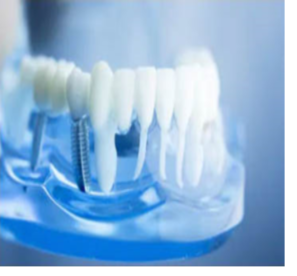
 Broaden your horizons with the New Sensofar System S wide
Broaden your horizons with the New Sensofar System S wide
 Alberto Aguerri, Sensofar
Alberto Aguerri, Sensofar
Alberto Aguerri, VP Sales at Sensofar Metrology presents the webinar to Learn all about Sensofar’s new exceptional 3D Optical Profiler which expands metrology towards a larger field of view for surface roughness measurements.
The S wide integrates the benefits of a digital microscope into a hi-resolution, fast scanning measuring instrument.
Webinar Topics:
♦ This new system improve routine operation through ease of use, with one-shot height measurements up to 40 mm, without Z-scanning
♦ Achievement of sub-micron height repeatability over entire extended area
♦ Color acquisition with the best resolution thanks to the integrated 5Mpx camera
♦ Form deviation from 3D CAD models for an effective integration to daily internal processes
Application: Rapidly measure samples in 3D for large field of view with high resolution. Used in advanced manufacturing, archaeology, paleontology, electronics, medical, molding, optics, etc.
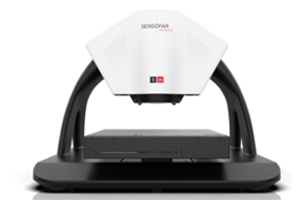
PHI Webinar Series: Ion Gun Options and Capabilities on VersaProbe XPS Microscopes
 Benjamin Schmidt, Physical Electronics
Benjamin Schmidt, Physical Electronics
Benjamin Schmidt, Staff Scientist will discuss three ion beam options – monoatomic argon, C60 ¬cluster, and argon gas cluster ion beam (GCIB) – available on XPS systems from Physical Electronics.
Webinar Topics:
♦ General operation of each gun and discuss capabilities and limitations for analysis of inorganic, organic, and mixed materials.
♦ Several side-by-side examples will illustrate how sputter rates, interface resolution, chemical state information, and preferential sputtering can affect the analysis.
♦ Recommendations will be presented on how to choose the correct ion gun for your application and how combinations of ion beams can be used to optimize surface analysis experiments.
Application:
– Surface cleaning to remove adventitious contamination and enhance signal from sample material
– Depth profiling to understand layer thinknesses, compositional changes from processing, and other properties

PHI Webinar Series: Auger Multi-Technique – EDS, EBSD, BSE & FIB
 John Newman, Physical Electronics
John Newman, Physical Electronics
John Newman, PHI Analytical Lab Director presents the latest Webinar and reviews the PHI 710 Auger Multi-Technique Instrument, with in-situ EDS, EBSD, BSE, and FIB, and demonstrating the usefulness of in-situ complementary analysis on a single UHV instrument.
Webinar Topics:
♦ PHI’s 710 Auger instrument with in-situ EDS, EBSD, BSE and FIB capabilities
♦ demonstrating the usefulness of in-situ complementary analysis on a single UHV instrument
Application: Determining the composition of micron and nano-scale sized features, as well as for general thin film analysis
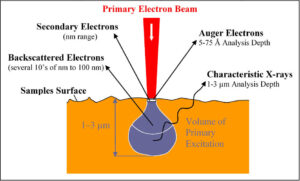
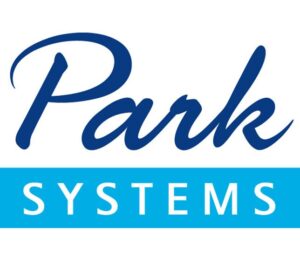 Introduction to PinPoint Piezoelectric Force Microscopy (PFM)
Introduction to PinPoint Piezoelectric Force Microscopy (PFM)
 Dr. Wenqing Shi, Park Systems
Dr. Wenqing Shi, Park Systems
Dr. Shi, Application Scientist at Park Systems, is proud to present an introduction to PinPoint piezoelectric force microscopy (PFM)
PFM is one type of scanning probe microscopy (SPM) technique that allows imaging and manipulation of piezoelectric and ferroelectric materials domains.
PFM functions by engaging a sample surface with a sharp conductive SPM probe. This probe’s tip then has an alternating current (AC) bias applied to it in order to cause a deformation of the sample surface by way of a piezoelectric force. The PinPoint variant of PFM, specific to Park Systems AFMs, enables image acquisition with higher spatial resolution without any lateral force.
Webinar Topic:
♦ PFM is a type of scanning probe microscopy (SPM) technique that allows imaging and manipulation of piezoelectric and ferroelectric materials domains.
Application: PinPoint Piezoelectric Force Microscopy (PFM)
 New Technologies for 3D Surface Metrology: Confocal Fusion & Continuous Confocal
New Technologies for 3D Surface Metrology: Confocal Fusion & Continuous Confocal
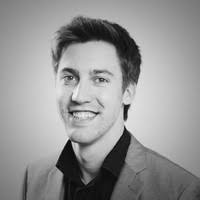 Dr. Albert Sánchez, Sensofar
Dr. Albert Sánchez, Sensofar
Albert Sánchez, Product Specialist at Sensofar Metrology, presents two new technologies: Continuous Confocal and Confocal Fusion. Both technologies combine key features of the existing Focus Variation and Confocal techniques.
Webinar Topics:
♦ Continuous Confocal
♦ Confocal Fusion
Application: Dental implants, carbon surfaces, etc.

 XPS Analysis of Multilayer Films Using Hard and Soft X-Rays on the PHI Quantes
XPS Analysis of Multilayer Films Using Hard and Soft X-Rays on the PHI Quantes
 Dr. Jennifer Mann, Physical Electronics
Dr. Jennifer Mann, Physical Electronics
Dr. Jennifer Mann presents work on XPS Analysis of Multilayer Films Using Hard and Soft X-Rays, using the new PHI Quantes Instrument. The Quantes has all of the capabilities of a PHI Quantera II XPS Scanning Microprobe along with the ability of HAXPES.
Webinar Topics:
♦ Multilayer films
♦ The new Quantes instrument
Application: Multilayer films

 Hybrid SICM-SECM technique for membrane degradation studies
Hybrid SICM-SECM technique for membrane degradation studies
 Dr. Shi Wenqing, Park Systems
Dr. Shi Wenqing, Park Systems
Dr. Wenqing, Application Scientist at Park Systems, will discuss a hybrid scanning nanopipette technique which combines Scanning Ion Conductance Microscopy and Scanning Electrochemical Microscopy. These techniques will help mapping chemical specificity and provide accurate feedback control for probe–sample distance enhancing imaging performance.
Webinar Topic:
♦ A hybrid scanning nanopipette technique which combines Scanning Ion Conductance Microscopy and Scanning Electrochemical Microscopy
Application: Hybrid SICM-SECM technique for membrane degradation studies

 Basics of Piezoelectric Force Microscopy (PFM)
Basics of Piezoelectric Force Microscopy (PFM)
 Dr. Christina Newcomb, Park Systems
Dr. Christina Newcomb, Park Systems
Dr. Newcomb, Applications Scientist at Park Systems, explains the basics of Piezo Force Microscopy (PFM), common uses of the technique, and an actual PFM study on the properties of multilayer ceramic capacitors. PFM is a novel AFM mode which has gained recognition for the unique information it can offer on the electromechanical coupling characteristics of various ferroelectric, piezoelectric, polymer, and biological materials.
Webinar Topics:
♦ Introduction to Piezo Force Microscopy
♦ PFM study on the properties of multilayer ceramic capacitors
Application: PFM study on the properties of multilayer ceramic capacitors
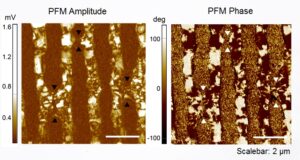
 In-Air and In-Liquid AFM Imaging with PinPoint Nanomechanical Mode
In-Air and In-Liquid AFM Imaging with PinPoint Nanomechanical Mode
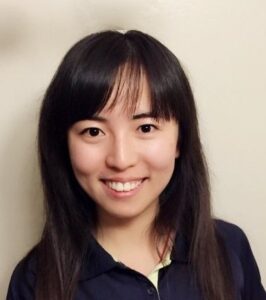 Dr. Mina Hong, Park Systems
Dr. Mina Hong, Park Systems
Learn more about one of the new nanoscale characterization innovations of Park Systems: In-Air and In-Liquid AFM Imaging with PinPoint Nanomechanical Mode. The webinar is specifically focused on the characterization, composition and mechanical properties of collagen fibrils.
Webinar Topics:
♦ Collagen fibrils
♦ PinPoint Nanomechanical Mode
Application: Collagen fibrils

 The Nanoscience of Drilling Fluids
The Nanoscience of Drilling Fluids
 Prof. Rigoberto Advincula, Case Western Reserve University
Prof. Rigoberto Advincula, Case Western Reserve University
Join the series of lectures featuring materials science expert professor Advincula. With considerable experience in the design, synthesis and characterization of new polymers and nanoscale materials, Prof. Advincula shares the latest developments in nanomaterials research in a variety of applications and fields.
Webinar Topics:
♦ Application of nanoscience to enhance drilling fluid performance
Application: Nanoscience

